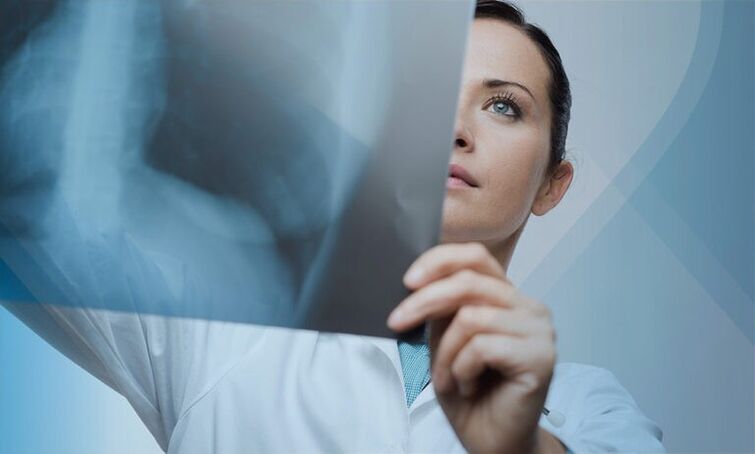Currently, not only people of retirement age are susceptible to the disease, but young adults over the age of 25 are also included in the high-risk group. Osteochondrosis affects different areas and sectors: lower back, neck, chest.

Etiology and staging of cervical osteochondrosis
Osteochondrosis occurs due to the following factors:
- Excessive physical burden on the spine;
- Bend over, disc injury;
- nervous, stressful situations;
- lack of essential vitamins, minerals and trace elements, which slow down metabolic processes and lead to the formation of osteochondrosis;
- a sedentary lifestyle;
- the presence of flat feet;
- sleep on a soft pillow or mattress;
- Frequent uncomfortable postures when sitting;
- carry bag on one side;
- Circulatory disturbances and muscle spasms.

All causes together or individually create favorable conditions for the development of osteochondrosis. Women are more prone to the condition, and it can be exacerbated by wearing high heels and a shoulder bag, and pregnancy is no exception. Failure to follow the rules recommended by the attending physician can lead to serious violations of the mother's health.
During the process of applying pressure to the neck area, cracks may form in the cartilage, discs may be displaced, and nerves and spinal cord may be pinched. There are blood vessels along the neck area that supply the brain with necessary substances, and their compression can lead to serious health problems. If cervical osteochondrosis is not treated at home, a person's condition worsens, the distance between the vertebrae narrows, and then bone tissue grows, causing severe pain and discomfort. There are several stages of cervical osteochondrosis:
- The first stage is characterized by cracks in the annulus fibrosus, possibly due to lateral displacement of the nucleus. Symptoms will be shooting and severe pain, sudden muscle spasms, and the patient may have mydriasis and tongue numbness -- indicators of the initial stages of nerve damage. Experts also often diagnose Wright and Naffziger syndrome, which is characterized by numbness, tingling, and pinching of nerve endings in the collarbone area when the hand is lifted. Neck pain does not go away on its own and often occurs during physical activity, characteristic tightening of the affected area, unprovoked fatigue, ringing in the ears.
- In the second stage, the space between the vertebrae is narrower, which leads to drying of the annulus fibrosus and the rupture of the capsule is also accompanied by an inflammatory process. Without proper treatment, osteophytes -- growths of bone tissue -- can develop.
- The third stage is characterized by the complete breakdown of the cartilage tissue, possibly with a prolapsed nucleus, which can lead to the formation of a herniated disc. Symptoms that help to identify the disease in stage 3 are usually acute pain in the neck area, frequent numbness in the extremities, a person cannot control their arms or legs, this is accompanied by dizziness and headache, loss of consciousness.
Disease diagnosis and treatment

If cervical osteochondrosis is suspected, do not self-medicate. Some diseases have very similar symptoms, and self-medication can lead to worsening and wheelchair use.
The disease is always easier to eliminate in the first stages of development, when it has not yet gained strength and does little damage to the internal organs.
The loss of precious time threatens long-term treatment, which includes taking medication, physical therapy exercises and observing daily regimens.
If symptoms of the disease are detected, it is necessary to contact a specialist - a neuropathologist, who will be able to diagnose, determine damage to the nerve endings and prescribe additional X-rays, vascular ultrasound and tomography. Diagnosis is based on MRI and radiography.
In the initial stages of the disease, the patient can treat cervical osteochondrosis at home, visiting a specialist at specific times and fully complying with his recommendations and prescriptions.
Medication involves taking certain medicines, which your doctor must prescribe, depending on the stage of the disease and the general condition of your body, and state the dosage:
- NSAIDs, received for up to 2 weeks;
- tranquilizers to avoid complete depletion of the nervous system, among them motherwort tinctures, valerian;
- When edema occurs, doctors prescribe diuretics to reduce swelling in the inflamed area;
- Normalization of metabolic processes in the affected tissues of the nervous system, improvement of neuromuscular conduction due to the intake of B vitamins;
- Muscle relaxants relax muscles that are prone to spasms;
- Take chondroprotective drugs to improve the function of the disc and cartilage tissue;
- In addition, experts prescribe the use of ointments and creams, which relieve pain, warm tissues, and help relieve the condition.
If the patient feels unwell, bed rest is required. Due to the correct position of the body, the disc relaxes and the pain is reduced. Stay in bed for no more than 2 days and the patient must ensure activity.
Tips for Alleviating the Human Condition
Doctors often hear questions about how to treat cervical osteochondrosis at home. If the patient is in the acute phase of the disease, he is advised to perform light breathing exercises and several movements to relieve spasms.
As fitness improves, sets of exercises can be performed in a seated or standing position under the supervision of an experienced specialist. When a person has learned all the necessary rules and strictly adheres to them, he can practice therapy at home.
It consists of several smooth turns and tilts of the head, followed by a gradual increase in load. If a muscle cramp occurs suddenly, a gentle massage that does not cause pain and discomfort is required.
For preventive purposes, in good health, experts recommend visiting an experienced massage therapist 2 times a year. It not only warms up muscles correctly and quickly, but also qualitatively removes small salt deposits and develops joints and vertebrae.
After consulting a doctor, a Glisson loop, which consists of several straps hanging from a hook, is permitted. They allow you to support your head and reduce stress on your neck. Diet plays an important role in the treatment of cervical osteochondrosis. Experts recommend excluding products from daily consumption that increase muscle tone and cause cramps — coffee, tea, alcoholic and low-alcohol beverages, smoked products, and spices. People with osteochondrosis will benefit from:

- Foods rich in fiber, phytochemicals and antioxidants, which not only improve the general condition of the patient, but also have a positive effect on the spine and cartilage tissue: these are fresh fruits and vegetables, legumes in any form, grains;
- Products containing protein - milk and its derivatives, nuts of any kind, eggs, meals and lean meats and fish, beef;
- Products containing unsaturated fatty acids - fatty varieties of marine fish, flax seeds, lightly fried and dried;
- Products with high calcium content in ingredients - yogurt products, mineral water.
If a person is not in the acute phase, it is best not to take the risk of spasming the affected tissue again from eating the wrong food. You need to drink adequate amounts of pure, non-carbonated water, eat a balanced diet, and get daily exercise from therapeutic exercise, which not only relieves and relieves tension in the affected part of the body, but also has a strengthening effect on the patient's body.
At work, you need to take short breaks, perform quick self-massages, and monitor proper posture.
The dangers of self-medication

In order not to put yourself at great risk, you do not need to self-medicate. Only an experienced specialist can understand the disease, find out the stage of osteochondrosis, take measures to eliminate the disease and prescribe the correct and qualified treatment. Some diseases are very insidious and can easily masquerade as other diseases.
Exams using X-rays, ultrasound, magnetic resonance imaging will help examine the structure of the disc, find problems and find the right options to eliminate them and relieve the patient's condition. If a person self-medicates, he may miss the initial stages of the disease and cause his body to suffer even more damage. Uncontrolled intake of drugs can damage not only the gastrointestinal tract, but also the liver and kidneys, which remove toxins and purify the blood in an enhanced manner.
After consulting your doctor at home, you can use decoctions of herbs and plants yourself, which will enhance the effect of ointments and preparations:
- Celery: 1 teaspoon of crushed root of this plant in 1 warm water, soak for 8 hours, strain and take 1 teaspoon. 3 times a day, after meals. Celery seed: 1 tablespoon. l. Pour 0. 5 liters of boiling water, hold for 2 hours, take 1 tablespoon. l. 3 times a day, before meals.
- Fresh horseradish or cabbage leaves, pre-crimped, apply to the sore area, tie with a warm scarf or scarf, and change as needed.
Expert advice on preventing osteochondrosis
The most common mistake many patients make is insisting that the disease will go away on its own.
Doctors say this attitude towards health adversely affects a person's condition and exacerbates the course of cervical osteochondrosis.
The treatment process involves not only removing pain, discomfort, and some symptoms, but also restoring damaged and cervical discs, removing the squeeze on the arteries leading to the brain, and keeping the person healthy.
The recovery process is quite long and requires a lot of patience, effort, and the help of friends and family, but the result will be to feel free, not dependent on drugs, and enjoy life.


























